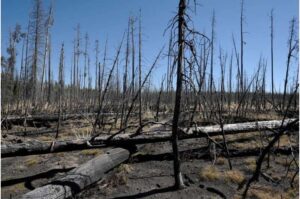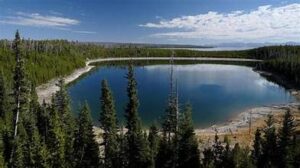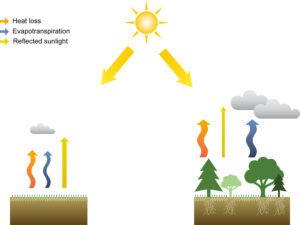As global climate patterns shift, the future of forest communities—vital ecosystems that support a myriad of species and human livelihoods—is undergoing profound transformation. Understanding how climate change impacts these communities is essential for developing effective conservation strategies and ensuring their resilience. This article explores the emerging trends in forest communities and how climate change is reshaping their future.
1. Shifts in Species Distribution
One of the most noticeable effects of climate change on forest communities is the alteration in species distribution. As temperatures rise and precipitation patterns change, many species are migrating to new areas that offer more favorable conditions. For example, tree species that once thrived in temperate regions are moving toward higher altitudes or latitudes, seeking cooler climates.
This shift in species distribution can disrupt existing ecosystems. Species that move into new areas may outcompete native species, leading to reduced biodiversity. Additionally, species that cannot migrate or adapt quickly enough face the risk of extinction. This trend emphasizes the need for conservation efforts that consider not just current conditions but also potential future changes in species distribution.
2. Changes in Forest Structure and Composition
Climate change is altering the structure and composition of forest ecosystems. Warmer temperatures and increased CO2 levels can lead to changes in tree growth patterns, with some species growing faster and others slower. Additionally, increased frequency of extreme weather events, such as storms and droughts, can cause significant damage to forests, leading to changes in forest composition.
Forests that were once dominated by certain species may now see a shift towards different species that are better adapted to the new climate conditions. This change in forest composition can impact the animals and plants that depend on specific tree species for food and habitat, further affecting the overall health of the ecosystem.
3. Increased Frequency and Intensity of Forest Fires
Rising temperatures and prolonged drought conditions are contributing to the increased frequency and intensity of forest fires. Forest fires, while a natural part of many ecosystems, are becoming more severe and more frequent due to climate change. This trend poses significant risks to forest communities, as fires can destroy large areas of habitat, release carbon stored in trees, and contribute to air pollution.
Effective fire management strategies are crucial for mitigating these risks. This includes controlled burns to reduce fuel loads, improving forest resilience through selective thinning, and enhancing early warning systems to detect and respond to fires more quickly.
4. Impact on Forest-Dependent Communities
Many human communities depend directly on forests for their livelihoods, including indigenous peoples, rural populations, and those involved in the forestry industry. Climate change impacts on forests can have cascading effects on these communities, affecting everything from food security to economic stability.
For example, changes in forest composition and structure can impact the availability of resources such as timber, non-timber forest products, and medicinal plants. Additionally, increased frequency of natural disasters, such as floods and landslides triggered by deforested areas, can disrupt communities and lead to economic losses. Addressing these impacts requires a multi-faceted approach, including support for sustainable forest management practices and the development of alternative livelihoods for affected communities.
5. Innovations in Forest Management
To address the challenges posed by climate change, innovative approaches to forest management are being developed. These include techniques for enhancing forest resilience, such as assisted migration (translocating species to areas where they are likely to thrive), and the use of technology to monitor and manage forests more effectively.
Additionally, there is a growing emphasis on integrating traditional knowledge with modern science to develop more holistic and adaptive management strategies. Collaboration between scientists, policymakers, and local communities is essential for developing solutions that are both effective and culturally appropriate.
6. Conservation and Restoration Efforts
Conservation and restoration efforts play a crucial role in mitigating the impacts of climate change on forest communities. Protecting existing forests, restoring degraded areas, and implementing sustainable land use practices are key strategies for maintaining forest health and resilience.
Efforts such as reforestation projects, the creation of protected areas, and the promotion of sustainable forestry practices help to conserve biodiversity, enhance carbon sequestration, and support ecosystem services. These efforts are essential for ensuring that forest communities continue to thrive in the face of climate change.
Conclusion
Climate change is reshaping forest communities in profound ways, from altering species distribution to increasing the frequency of forest fires. Understanding these emerging trends is crucial for developing effective strategies to protect and sustain these vital ecosystems. By embracing innovative management approaches, integrating traditional knowledge, and investing in conservation and restoration efforts, we can work towards a future where forest communities remain resilient and continue to provide essential benefits to both the environment and human societies.



